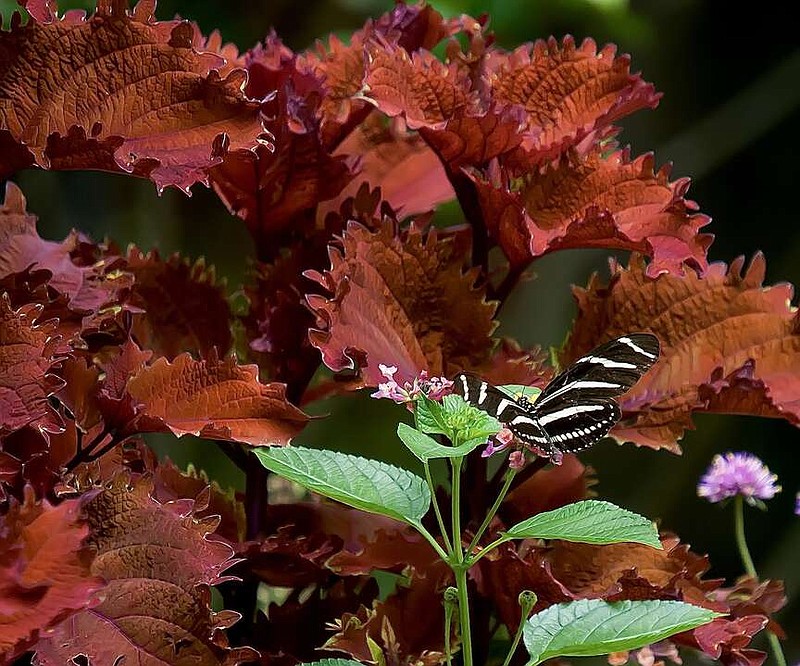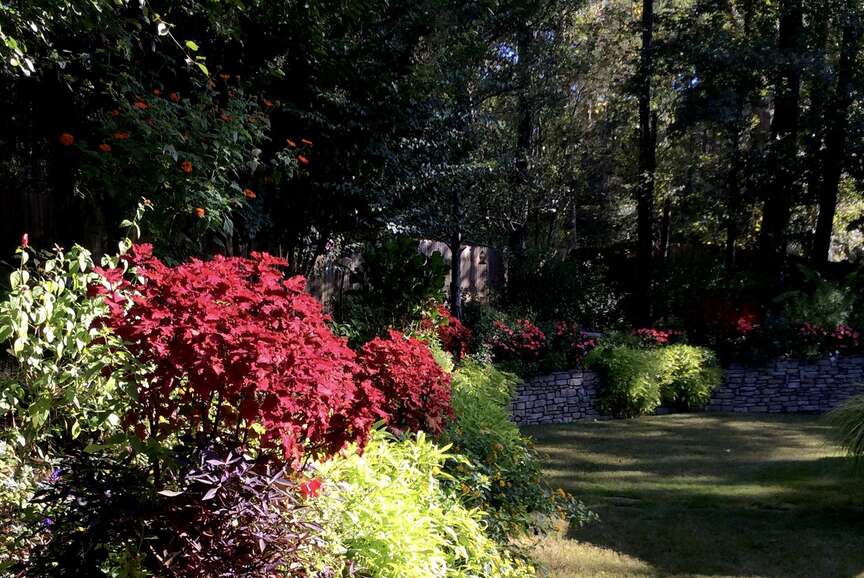The excitement for spring planting is building at a feverish pitch and many are wondering what they can do to add more pop to the landscape. The answer just might be ColorBlaze coleus, and I am not just talking a dab.
A dab is precisely how many of you have looked at coleus. One little coleus here should do just fine. This prevalent thinking means we are under utilizing a terrific bedding plant, one that will be looking showy literally for months. In my Georgia zone 8 garden, I am pretty much guaranteed 200 days of award-winning performance. (Arkansas has zones 6-8 with most of the state in zone 8.)
By awards, I'm talking about a bunch. The 18 varieties of ColorBlaze coleus have won 383 awards and include more Perfect Scores than I have ever seen. The old days of looking for shade or sun tolerance are gone for The Garden Guy. I just plant the color I want where I want.
There are several ways to knock it out of the park with ColorBlaze coleuses. You can certainly reach true potential by mass planting at least seven in a large informal drift. Follow this up by planting companions in front.
When ColorBlaze Wicked Hot made its debut, I chose to use several. But be repetitive throughout the landscape, like we suggest with shrubs and even trees. Gosh, I have fallen for this idea as it makes your eyes go from locale to locale in the garden whereby you see the same flaming orange but different companions.
Doing this with even three, four or five gives the thought to everyone who visits that you had a plan in mind. In other words, you knew what you were doing. I've done that with ColorBlaze Cherry Drop and ColorBlaze Sedona Sunset. The ColorBlaze Sedona Sunset looked like it was growing in a jungle, but the fact that you could see others nearby just made the planting work.
The plants in the ColorBlaze series are vegetatively produced varieties of coleus resistant to blooming until really late in the series, thereby providing nonstop vibrant colorful foliage from spring until frost.
Coleus prefers organically rich, well-drained soil. Amend tight heavy soil with 3 to 4 inches of organic matter tilling to a depth of 6 to 8 inches. Space plants as recommended per variety purchased.
Keep the coleus watered and mulched during the growing season. Feed with a light application of a slow release 12-6-6 fertilizer a month after transplanting and again in midsummer. Pinching in mid- and late summer keeps the plant bushy.
The coleus is a tropical plant and can certainly give a carnival-like atmosphere to the garden. Grow in the shade or filtered light gardens with Let's Dance hydrangeas, Soprano impatiens and Shadowland hostas. Use in full sun as a backdrop in your pollinator garden. The ColorBlaze coleus makes every companion flower ever more beautiful.
Since the early 1990s the coleus has gone from an obscure plant to one of unprecedented popularity largely thanks to varieties like the ColorBlaze series. The old hairdressing commercial saying "A Little Dab Will Do You" may work for Brylcreem but when it comes to ColorBlaze coleus, go bold!
Norman Winter is a horticulturist, garden speaker and author of "Tough-as-Nails Flowers for the South" and "Captivating Combinations: Color and Style in the Garden."


